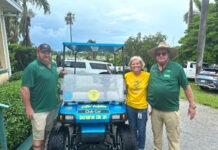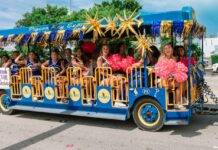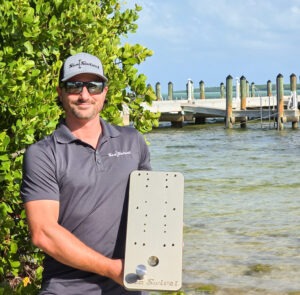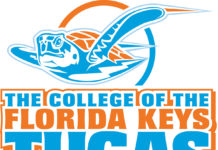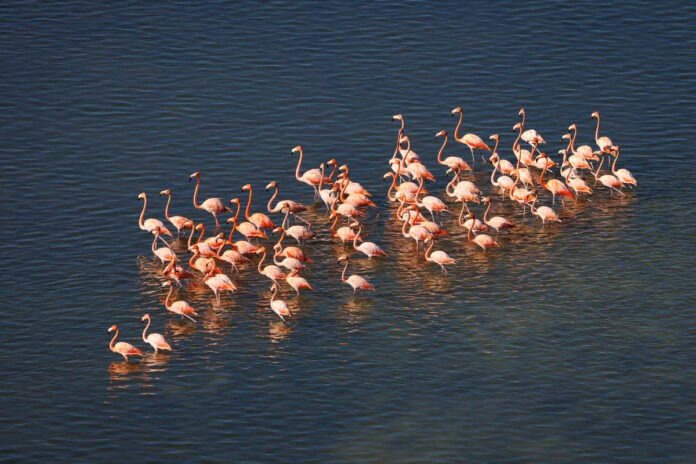
American flamingos, popularly known as pink flamingos, faced extinction in South Florida. But now they are reappearing in the Everglades and the Florida Keys.
Not every flamingo story is a happy one. On July 12, the staff at the Florida Keys Wild Bird Rehabilitation Center in Tavernier received calls from people in the area around Harry Harris park reporting a flamingo in distress. According to Erin Allison, the executive director of the Wild Bird Center, two staff members responded to Burton Drive near the park. The bird was reported by multiple drivers on the road who stated the flamingo was extremely disoriented and could not fly away.
“With their long legs, flamingos run to get airborne. This bird could run, but it didn’t have the strength to fly,” Allison said. “Our staff members were able to corral the bird and immediately brought it to our avian hospital. During the initial examination they found that the large bird weighed just under 4 pounds, was weak and emaciated, and covered with mites.”
In the course of an hour, its body temperature dropped from 105.6 to 100.6 degrees, leading staff to put six heat lamps on the flamingo in an attempt to stabilize it. The flamingo was given subcutaneous fluid and an iron dextran injection to treat anemia. It was also sprayed with an antiparasitic to treat the mites.
Wild Bird Center hospital manager Delaney Galbraith developed a master’s degree thesis on re-feeding emaciated birds. This is her area of expertise. Volunteer veterinarian Alison Millington came in to examine the bird.
Despite expert treatment, the pink flamingo died the next day.
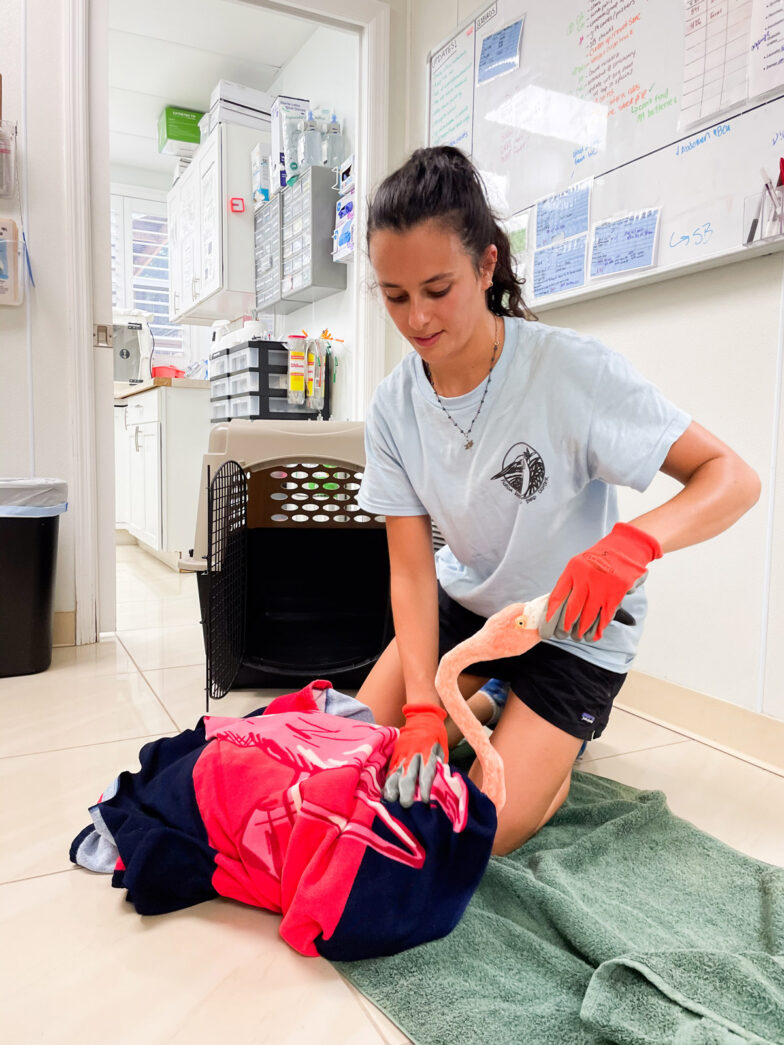
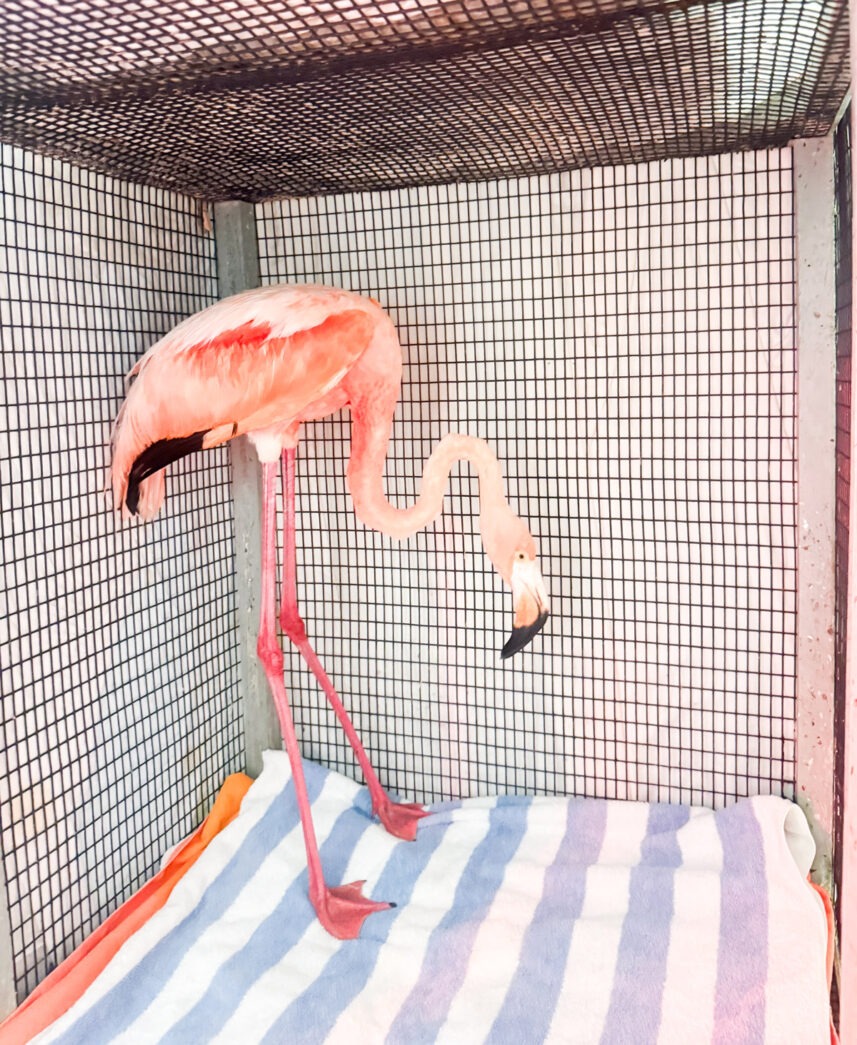
“Our team did everything they possibly could for the American flamingo, but unfortunately, it was unstable and actively declining when we admitted it into our hospital,” Allison said.
Allison added it’s the first time an American flamingo was admitted to the rehabilitation center.
The return of American flamingos to South Florida is tied in part to the winds of Hurricane Idalia in 2023. The fact that they stayed and grew, doubling in numbers since the 2023 reports, is credited by Cook and others to improvements of the aquatic environment in the Keys.
There were reports last February of flamingos in Key Largo. Mark Cook, a restoration scientist and avian ecologist, recently photographed a flock of 125 birds around Garfield Bight, just east of the town of Flamingo on the south shore of the Everglades — the backyard of the Upper Keys.
State Rep. Jim Mooney credits Everglades restoration efforts for the return of flamingos. In the last legislative session Mooney introduced House Bill 81, a conservation bill, making the American flamingo the state bird – the mockingbird was designated the state bird in 1927 – and naming the scrub jay as the state songbird. Mooney has stated that we are “saving the environment of the flamingo while bulldozing the environment of the scrub jay in central Florida.”
The bill didn’t move forward in 2025, but he intends to make it the first piece of legislation he introduces in 2026.






